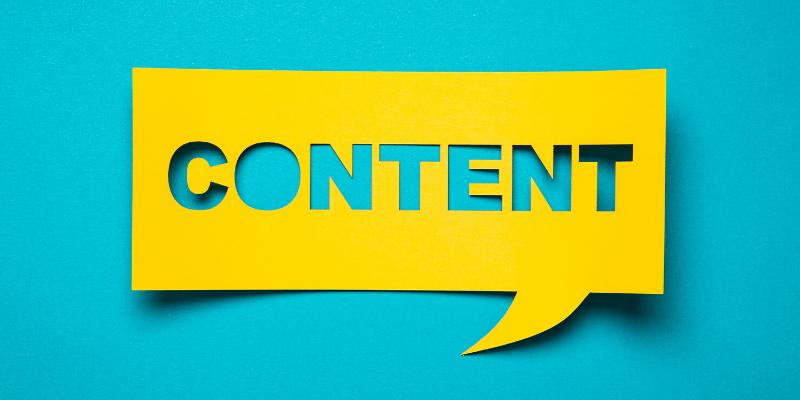
The sheer volume of content in various forms creates a lot of noise, making it tough for content creators and marketers to keep users engaged and interested. Furthermore, dynamic changes in lifestyles and industry trends impact consumer preferences in multiple ways.
In such a rapidly evolving era, the only way to make content stand out is through the application of generative AI (GenAI) for personalised content creation. AI adoption has more than doubled in the past five to six years, supporting the dynamic transformation of content creation and customisation. According to a report by MarketsandMarkets, the global artificial intelligence market size will reach $1345.2 billion by 2030.
Need for planned approach
While genAI showcases remarkable capabilities, brands must adopt a structured and planned approach to use these merits effectively.
Setting the strategy
Instead of jumping straight into using genAI tools, it’s advisable to set a content strategy built on the content vision–what the brand aims to achieve through the content. Determining the types of content and the distribution channels is also essential.
Identifying the right tools
Once a brand determines what to achieve, it’s easier to identify the means to achieve it–in this case, identifying the right genAI tools to meet the content creation needs. Currently, a vast array of AI tools dominate the market. Based on the needs, companies can opt for different tools for writing, hosting podcasts, designing, and more.
Tool training
AI tools like ChatGPT need to be trained to advance their capabilities, and the same applies to other varieties of AI tools. Though content personalisation is the goal, each brand has its voice and tonality that must be maintained.
Companies can create content that connects with the target audience by training the AI tools to resonate with the brand voice. However, training the tools is an ongoing process and requires a constant curation of data.
Creating the content
Once the desired level of training is achieved, brands start creating content using the trained AI tools. However, it’s not recommended to eliminate the human element from AI-generated content. Once the tool creates the initial content, it must be reviewed and updated to include the company’s voice, at least in the early stages. The editing process often provides leads on the amount of further training required for the AI tool to align better with the brand tone.
How GenAI is used
The emergence of tools powered by GenAI has enhanced the rate and volume of content creation, positively impacting companies’ productivity and profitability across industries.
Here are a few popular use cases of genAI for content creation.
Enhancing content creation
There is no shortage of content available on the internet, and now that can be used to train AI tools. By absorbing and analysing the wide range of content, AI tools can create engaging and relevant content suited to the needs of various consumer segments.
Popular AI image generation tools such as DALL E and Midjourney can create unique images with customised prompts while AI video generation tools like Synthesia and Kapwing are making video content generation less time consuming. Further, AI chatbots like Chat GPT and Bard make text content creation seamless.
Consider ChatGPT, for instance. Developers trained the tool with a simple directive–predict the next word in a text string multiple times. After nearly a trillion predictions, the tool neared perfection, predicting the next word. Furthermore, it applied its training to answer questions.
The moral of the story? ChatGPT evolved and became what it is today through constant training, which enables it to create different varieties of content.
Customised user experiences
According to a McKinsey & Company report, 71% of consumers expect personalised interaction from brands–a requirement that can be met by combining consumer data and the merit of AI tools.
The tools can be trained to understand customer behaviour, analyse historical data, and predict buying decisions. This data can train large language models (LLMs) to create highly personalised content that connects with the audience and identifies the best campaign channels to reach specific consumers.
Not only does AI-generated personalised content foster stronger customer relationships, but it also leads to great conversion rates.
Content localisation
As businesses assume global roles, their content must be localised to cater to different markets. According to a study conducted by CSA research, 76% of online shoppers prefer to buy products with information in their native language.
GenAI tools are handy in such cases, simplifying and accelerating the content localisation process, eliminating the need for time-consuming manual translation. Like other capabilities, the translation skills of genAI tools are iterative, improving with constant feedback while adapting to various styles and contexts.
Overcoming creative blockers
Writer’s block among content creators is not unheard of. In pursuing fresh content ideas, writers often face creative challenges that can be overcome using genAI tools. However, this is subjective, since AI tools are only as original and creative as the humans commanding it. Using thought after initial prompts, content creators can discover fresh new storytelling angles, explore more contemporary topics, and create uniquely crafted content.
We are moving towards an exciting AI-augmented human society characterised by co-creation. To utilise the capabilities of AI to its full potential, creators must be ready to envision and experiment with co-creation. However, while exploring the endless possibilities of generative AI, the ethical consideration of the technology must not be overlooked.
The author is Leader of Engineering and General Manager of India at Contentstack, a content management platform.


![Read more about the article [Turning Point] How this entrepreneur couple started up to provide chemical-free products for their baby](https://blog.digitalsevaa.com/wp-content/uploads/2021/05/tp-1620371404575-300x150.png)


![Read more about the article [Funding alert] Delhi startup Marquee Equity secures $3.8M from Capital One, Arrowroot Capital, others, for un](https://blog.digitalsevaa.com/wp-content/uploads/2021/02/165-VC-funding1552277843560-300x150.jpg)




